SECONDARY RESEARCH
SECONDARY RESEARCH
(UNDERSTAND) + (GATHERING DATA)
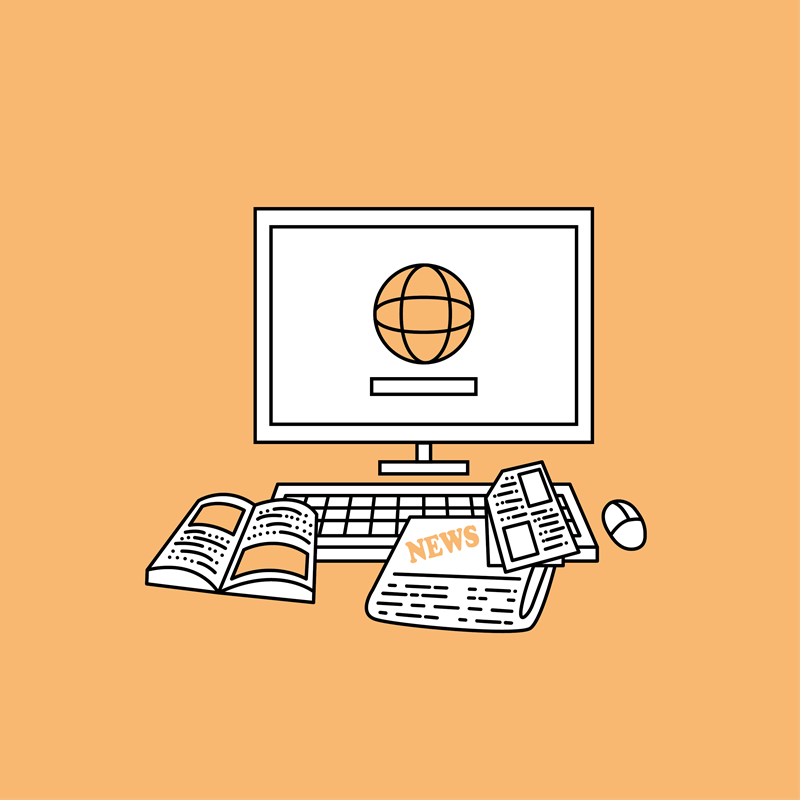
Consult the internet, books, journals, magazines, newspapers and more to help you gain a head start over your problem.
- Understand the broader context of the problem. The internet, newspapers, magazines and journals are great places to start.
- Learn more about the recent innovation with regards to the problem.
- Find out about solutions that worked or didn’t work for your problem.
- Explore the facts and figures to understand more about your problem.
INTERVIEW
INTERVIEW
(UNDERSTAND) + (GATHERING DATA)
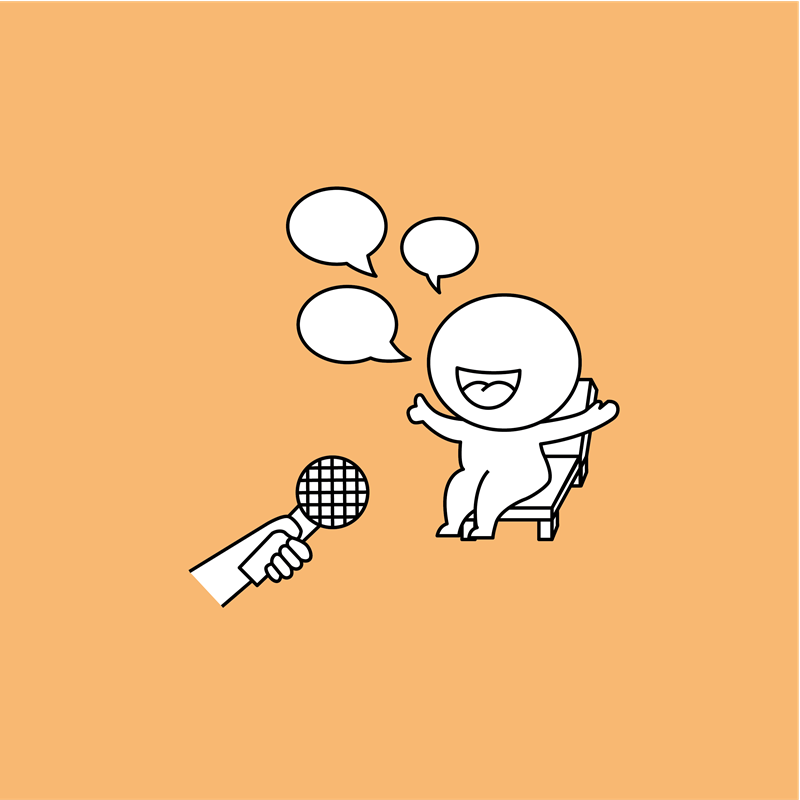
Hold an interview with a user you have in mind to hear at depth from the people facing the issues for insights and new understanding about the problem at hand.
- Craft the interview questions with your team. Start from broad questions first to build some rapport with the interviewee before moving to more specific questions about the problem.
- Make sure that no more than 3 persons from your team attend the interview with the interviewer so as to not overwhelm the interviewer.
- Assign the three persons as the interviewer, the note taker and the photographer respectively. If less people from your team are attending the meeting, re-assign the roles accordingly.
- Conduct the interview. Feel free to pursue interesting topics brought up by the interviewee.
- Make sure that the notetaker takes down the interviewee in his or her own words.
BRAINSTORM RULES
BRAINSTORM RULES
(IDEATE) + (UNBALANCED CONVERSATION)(SETTING UP A CONDUCIVE SESSION)
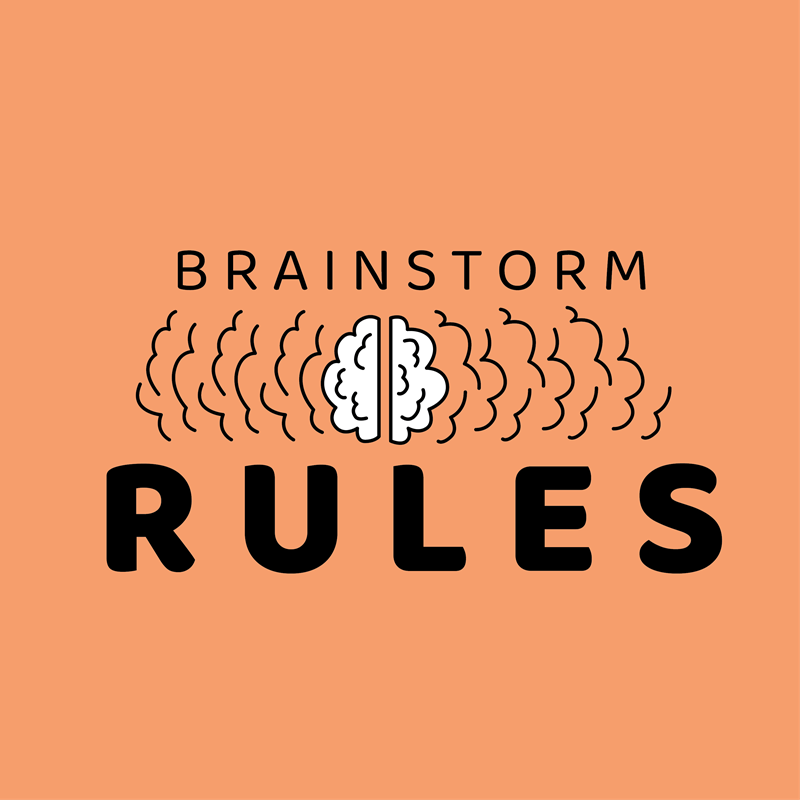
Brainstorming rules from IDEO, a leading design firm that designed the first manufacturable mouse for Apple.
- Defer judgement.
- Encourage wild ideas.
- Build on the idea of others. Say “yes, and…” rather than “but”.
- Stay focused on topic.
- One conversation at a time.
- Be visual .
- Write your ideas on post-its and put them on the wall.
- Go for quantity.
BRAINWRITING
BRAINWRITING
(IDEATE) + (BIAS TOWARDS FIRST IDEA)(IDEAS BEING SHOT DOWN PREMATURELY)(UNBALANCED CONVERSATION)
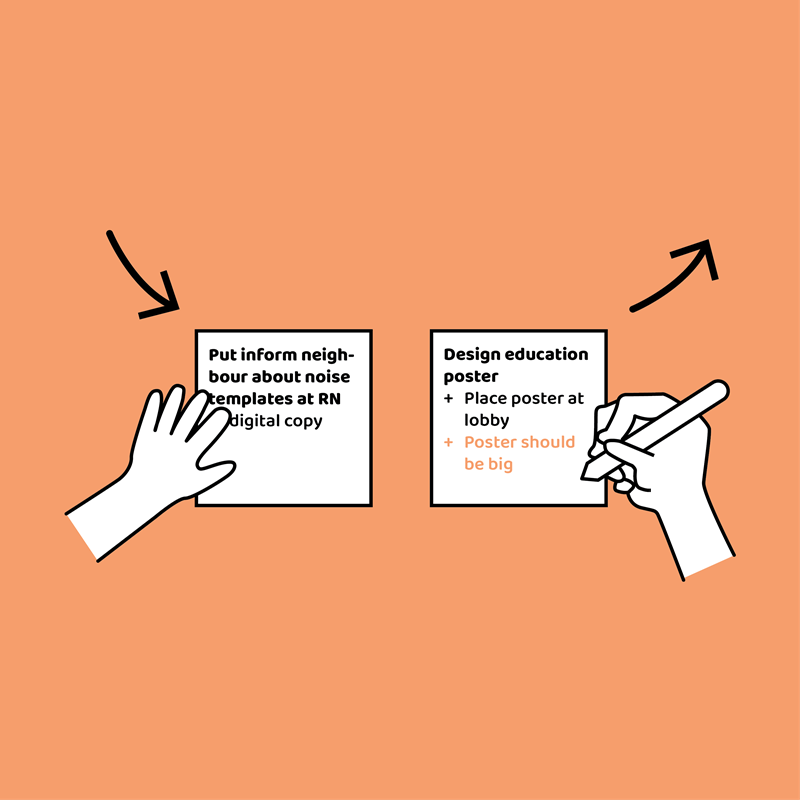
A nonverbal brainstorming method that helps make sure that everyone can equally contribute without being overly fixated on the first idea.
- Everyone is given 2 minutes to pen down two ideas they have on a piece of paper or post-it.
- Everyone places their papers at the middle of the table, idea-side facing down.
- The papers are shuffled.
- Everyone takes 2 papers at random.
- Everyone is given another 2 minutes to add abullet point to the paper to build on the idea.
- Everyone passes their paper to the next person.
- Step 5 and 6 is repeated until everyone haswritten on each individual paper.
- When everyone has written on each individual paper, go through all the ideas together as a group.
- Organise the ideas to facilitate decision making by: (i) Grouping similar ideas together, (ii) Combining ideas, if necessary, (iii) Copying certain features from an idea to another, if necessary and (iv) Merging features from different idea to make a new idea, if necessary.
- After the ideas are organised, everyone is given one vote to vote on the idea or the group that they think is best.
Note: Keeping the identity of the person who suggested theidea anonymous at the start helps make sure that comments focus on the idea butnot the person who suggested the idea.
GROUP INTERVIEW
GROUP INTERVIEW
(UNDERSTAND) + (GATHERING DATA)
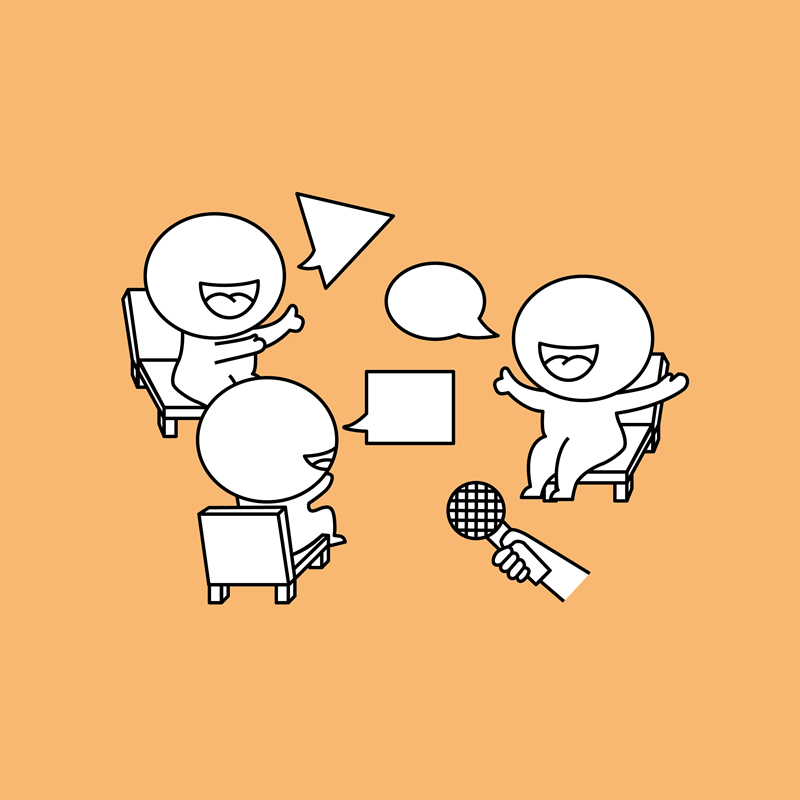
Hold an interview with a shortlisted group of users for aquick understanding of what is the norm for the group.
- Identify the group of people you wish to interview. Selection of interviewees can be based on their age, gender, identity, trait or more. For example, if you want to understand more about playgrounds, then a group interview can be held with mothers with young children. If you want to understand more about smokers, then a group interview can be held with smokers.
- Craft the interview questions with your team. Start with an icebreaker to help the group warm up to each other.
- Assign a facilitator and notetaker from your team.
- Conduct the group interview. The key is to have the group interact with each other rather than with the facilitator.
WALK-ALONG INTERVIEW
WALK-ALONG INTERVIEW
(UNDERSTAND) + (GATHERING DATA)
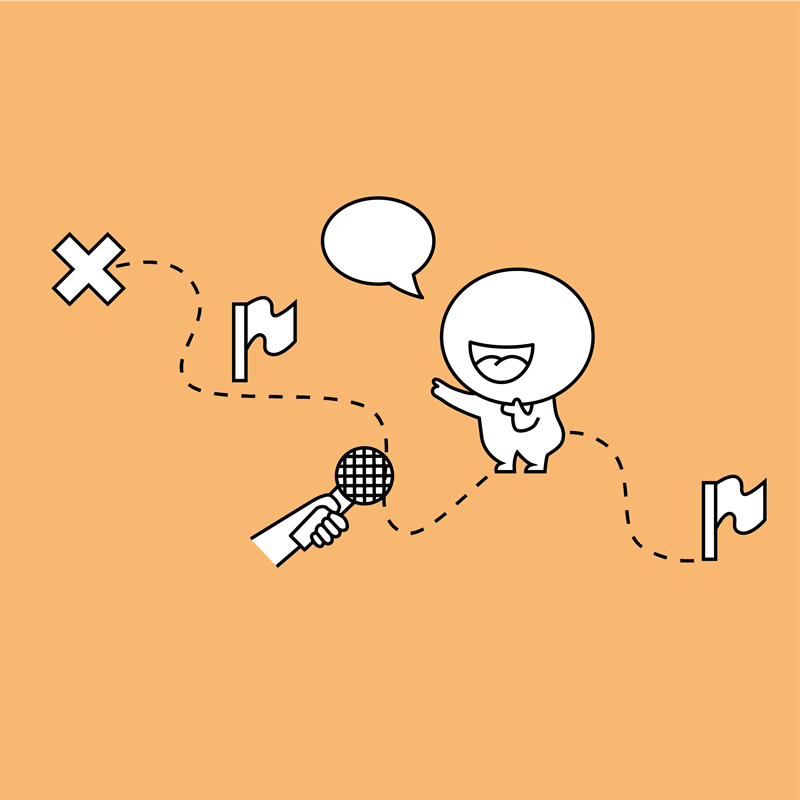
Hold an interview with a user you have in mind while asking them to take you through a route that is associated with your interview for anin-depth understanding of place-based issues.
- Let the user take you on a route or decide on the route that you want your user to take you through with your team. For example, if you want to understand more about the hygiene of hawker centres, it can be fruitful to design a route through the hawker centres for the interview. Sensory cues or certain scenes along the route can result in richer interviews.
- Craft the interview questions along the route with your team. Start from broad questions first to build some rapport with the interviewee before moving to more specific questions about the problem.
- Assign an interviewer and a notetaker from your team.
- Conduct the walk-along interview.
OBSERVATION
OBSERVATION
(UNDERSTAND) + (GATHERING DATA)
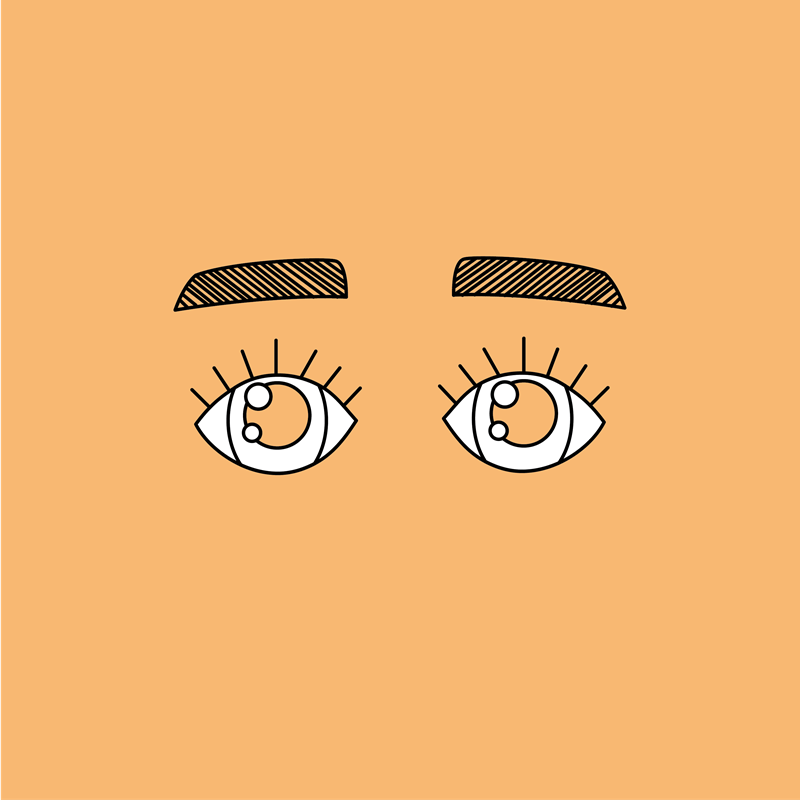
Observe a location/object for an in-depth understanding ofhow people use the space/ interact with the object.
- Shortlist the location to observe the issue that your team wishes to understand with your team.
- Identify the ideal time period to conduct the observation based on when users of the issue are active (weekend/weekday, morning/afternoon/night).
- Conduct the observation. Take detailed field notes during the observation.
MAPPING
MAPPING
(UNDERSTAND) + (GATHERING DATA)
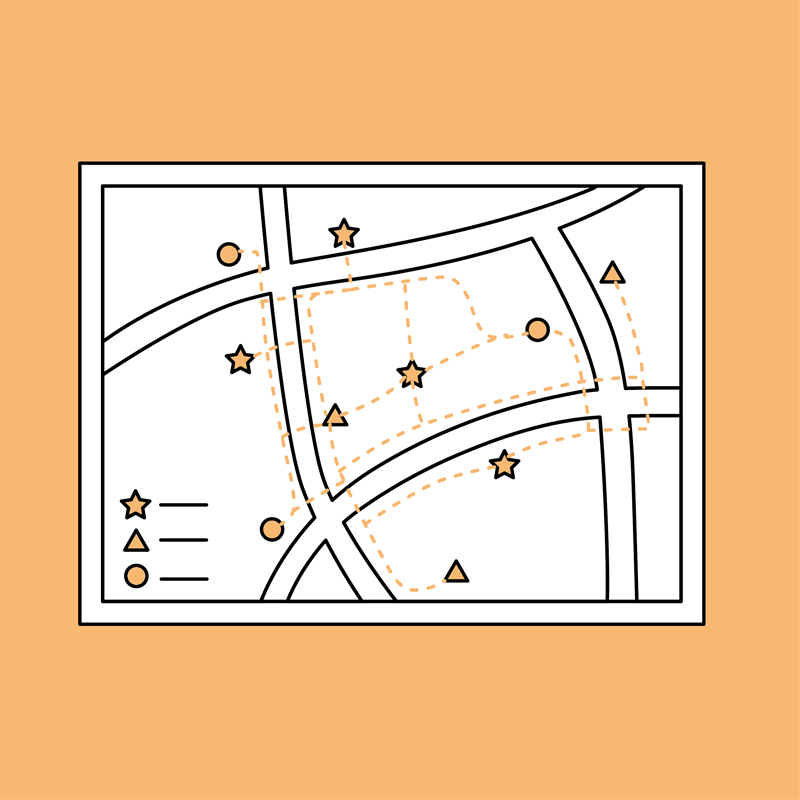
A tool to help your team take note of objects or pathways in a spatial way.
- Identify with your team what objects/pathways are important to map for your issue at hand.
- Identify with your team what is the area which you are interested to map.
- Map the identified objects/pathways within the determined area.
FIND THEMES
FIND THEMES
(UNDERSTAND) + (MAKING SENSE OF DATA)
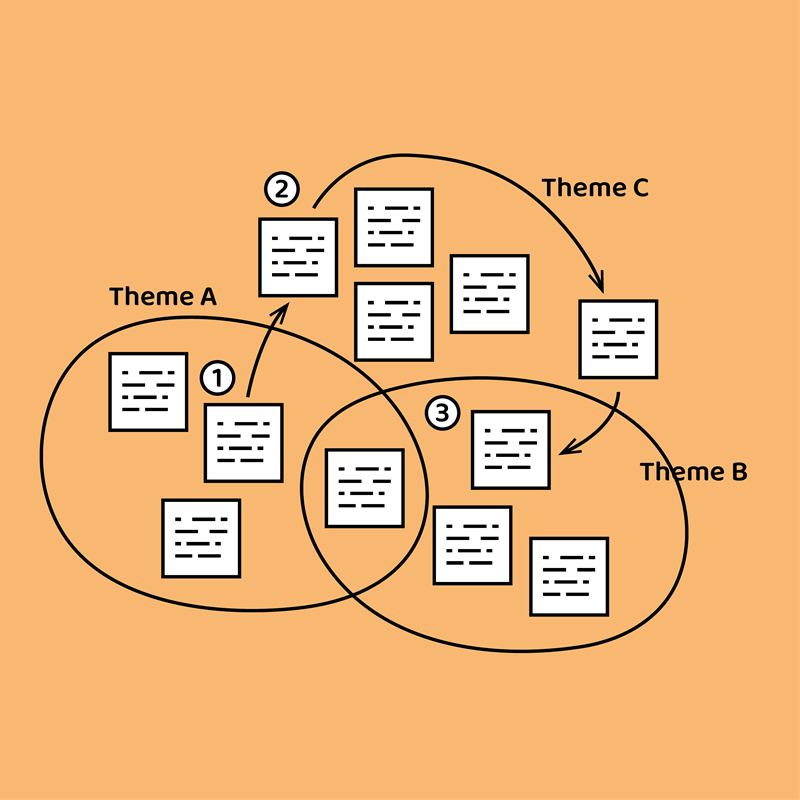
An exercise to help your team make sense of all your findings.
- Write down the most common and interesting findings from your team’s research into the issue on post-its.
- Discuss with your team to create groups for similar post-its and to identify patterns and relationships between the groups. For example, what is a consistent finding across all your research? What is a recurring problem that you have heard from your users? Which finding struck you the most?
- The aim is to keep grouping and linking findings until key themes that can help with designing the solution emerge. Continue the process until your team is satisfied with the themes that emerge.
- The themes can be used to help your team come upwith a solution.
CREATE INSIGHT STATEMENTS
CREATE INSIGHT STATEMENTS
(UNDERSTAND) + (MAKING SENSE OF DATA)
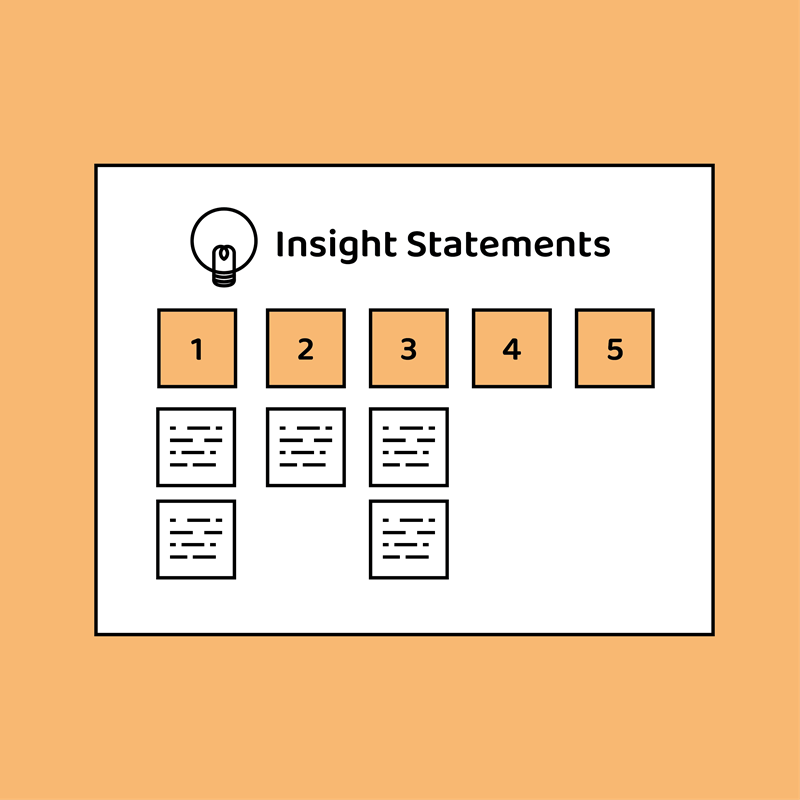
An exercise that helps your team come up with statements that will guide the formulation of solutions, ideally conducted after the “Find Themes” exercise.
- Write down the themes you have identified on post-its.
- Rephrase the themes as short statements.
- Eliminate rephrased themes that do not help you towards crafting a solution until your team is left with 3 to 5 statements.
- Rephrase these shortlisted statements again, if necessary.
- The insight statements can be used to help your team come up with a solution.
RAPID IDEATION
RAPID IDEATION
(IDEATE) + (IDEAS BEING SHOT DOWN PREMATURELY)
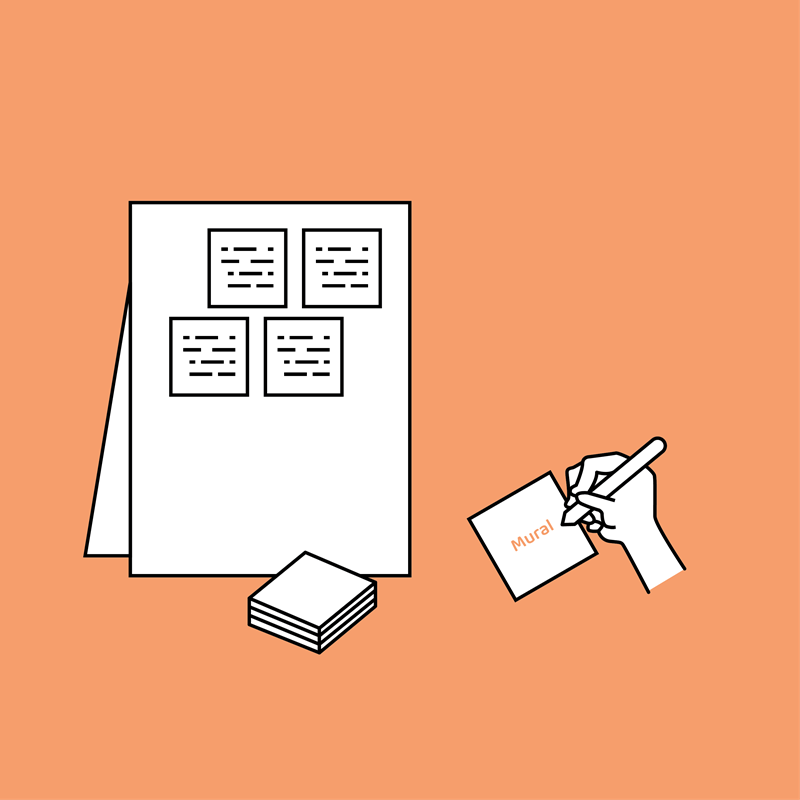
A brainstorming technique that allows for the generation of a large number of ideas without the risk of ideas being shot down prematurely.
- Everyone is given 3 minutes to write down anyidea about the topic that they have on pieces of paper or post-it.
- No critique of ideas.
- When the time is up, go through all the ideas together as a group.
- Organise the ideas to facilitate decision making by: (i) Grouping similar ideas together, (ii) Combining ideas, if necessary, (iii) Copying certain features from an idea to another, if necessary and (iv) Merging features from different idea to make anew idea, if necessary.
- After the ideas are organised, everyone is given one vote to vote on the idea or the group that they think is best.
- After the ideas are organised, everyone is given one vote to vote on the idea or the group that they think is best. (Tip: You can be flexible with the number of votes depending on the number of ideas and the goal of the brainstorming session.)
Note: The short timing given for writing the idea is important because of the sense of urgency it creates which prevents people from talking themselves out of their own ideas prematurely.
S. C. A. M. P. E. R.
S. C. A. M. P. E. R.
(IDEATE) + (WHERE TO START)
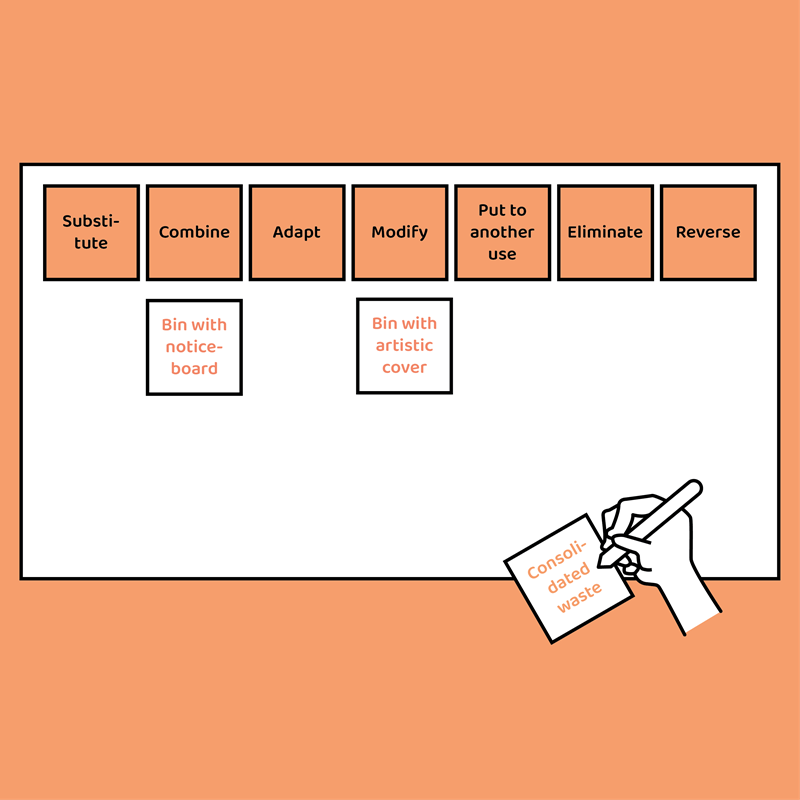
A brainstorming technique with handy acronym prompts that helps break down existing infrastructure into new solutions.
- Identify an existing infrastructure that deals with the problem you are trying to solve.
- Everyone is given 2 minutes to write down their ideas for each prompt.
Substitute- What happens if we substitute X for Y?
Combine- What happens if we combine X and Y?
Adapt- What happens if we adapt this to a different context?
Modify- What happens if we change feature X?
Put to Another Use- What other uses might this project have?
Eliminate- What can we remove from this project?
Reverse- What can we reorganise about the project?
- After all the prompts are answered, everyone is given one vote to vote on ideas that they want to implement. (Tip: You can be flexible with the number of votes depending on the number of ideas and the goal of the brainstorming session.)
- The top voted ideas can be combined together as one idea, if necessary.
REVERSE BRAINSTORMING
REVERSE BRAINSTORMING
(IDEATE) + (WHERE TO START)(OVERLY STRONG OPINIONS AT THE START)
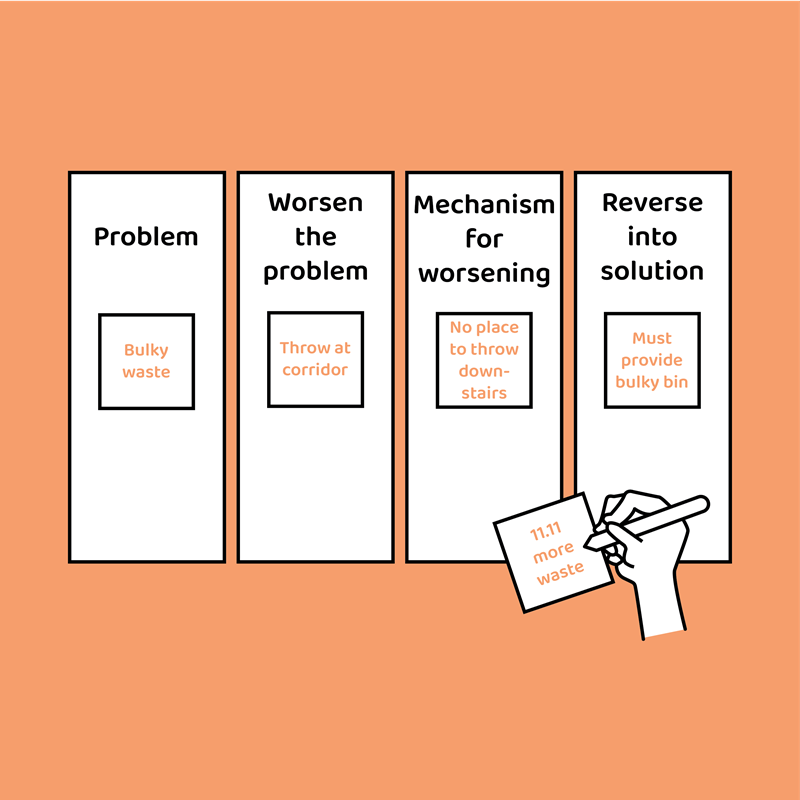
A brainstorming technique that starts first with thinking about how the problem can worsen and then reverse thinking the mechanism through the problem can worsen into ideas for your solution.
- Identify the problem as a group. Make sure that the problem is sufficiently defined so that everyone is on the same page.
- Think about how the problem can worsen. Write them down on pieces of paper or post-its.
- Now that the group has several pathways on how the problem can worsen, think about how to prevent each of these pathways from happening. Write down these ideas.
- Evaluate these ideas to find the best solution to your original problem.
STORYBOARD
STORYBOARD
(IDEATE) + (WHERE TO START)
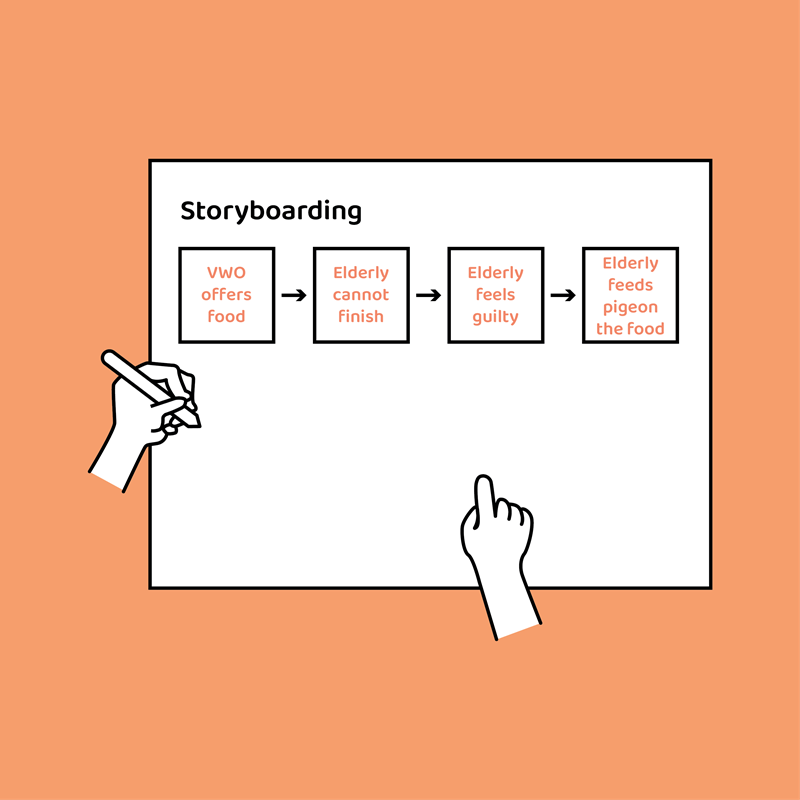
A brainstorming technique that uses real or imaginary scenarios to guide ideation.
- The group draws up real or imaginary scenarios of how an issue occurs. The group develops the scenario together step-by-step.
- Everyone comes up with ideas by thinking about: (i) Which step to intervene at, (ii) How the scenarios are different and (iii) What other scenarios to cover.
ALTERNATIVE WORLDS
ALTERNATIVE WORLDS
(IDEATE) + (GETTING STUCK IN A SESSION)
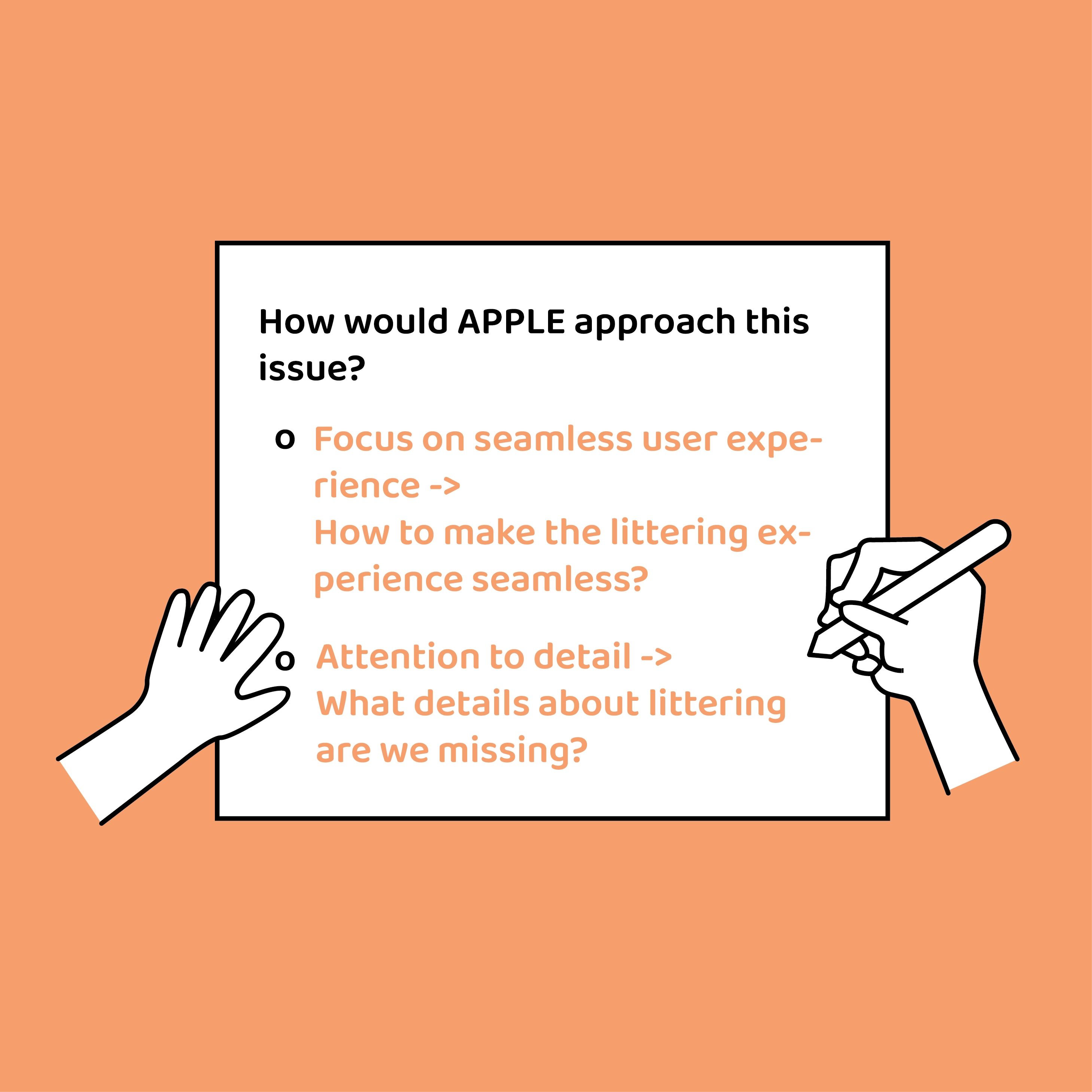
A brainstorming technique that leverages on other perspectives to generate ideas.
- Everyone receives a well-known brand as a prompt. For example, Google, Apple, Tesla, Nike etc. Prompts are not to be repeated in your team.
- Everyone is challenged to think about how the brand they received as a prompt would approach the issue.
- Everyone is given 7 minutes to sketch a solution accordingly. The sketch is to include the main principles that you derived from the brand which guided your sketch.
Note: Make sure that the brands chosen are well-known.
HOW NOW WOW
HOW NOW WOW
(IDEATE) + (CHOOSING THE BEST IDEA)
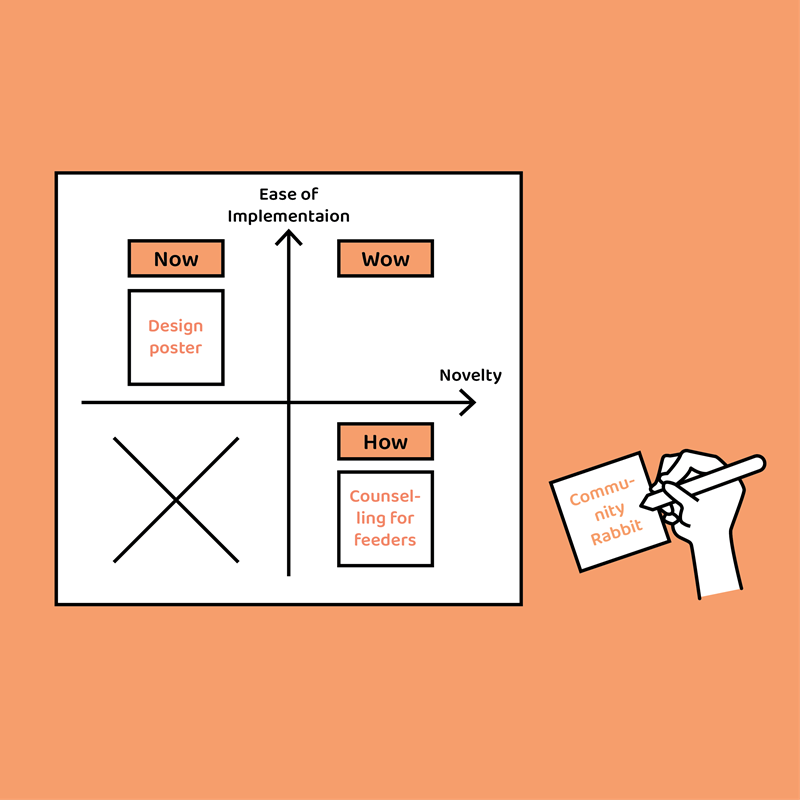
A technique to evaluate ideas based on ease of implementation and novelty factor.
- Draw a x axis and a y axis. Label the y axis as ease of implementation. Label the x axis as novelty.
- Place the ideas along the axis. Ideas placed in the “easy to implement and novel” quadrant represents Wow ideas. Ideas placed in the “hard to implement and novel” quadrant represents How ideas. Ideas placed in the “easy to implement and not novel ideas represent Now ideas. Ideas placed in the “hard to implement and not novel” are ideas that should be eliminated. Your group can decide what to do with the wow, now and how ideas depending on the time frame and scale of your project.
STARBURSTING
STARBURSTING
(REFINE)
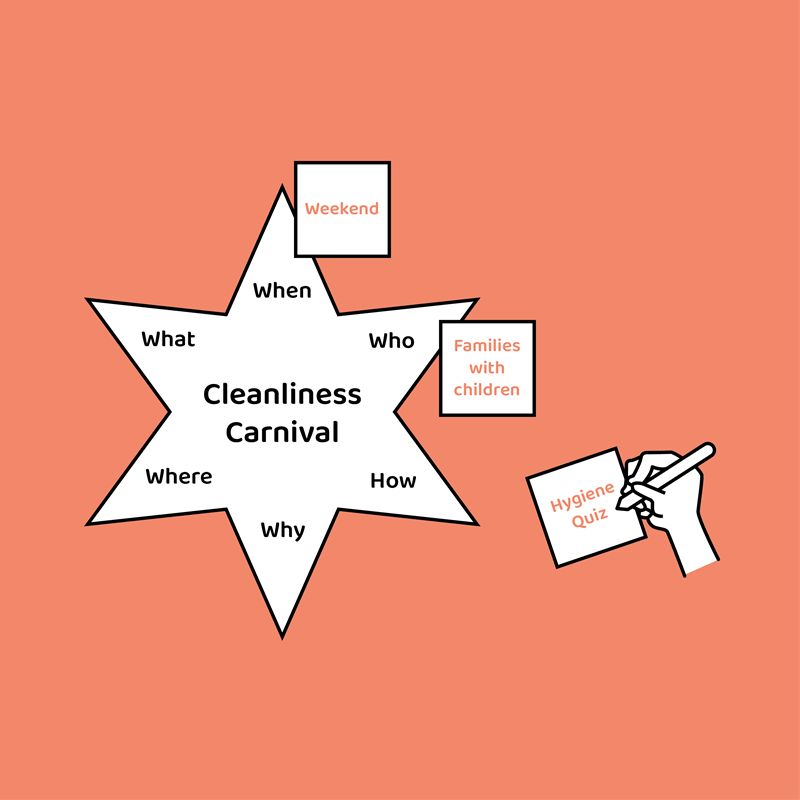
A technique that helps to refine ideas from different angles.
- Draw a six-pointed star with the idea at thecentre.
- Write down “who”, “what”, “when”, “where”, “why” and “how” at each end of the star respectively.
- Focus on answering the questions.
Note: This technique helps reframe the team from attacking or defending a particular idea to figuring out together how to execute the idea. The team has to make a call depending on the state of the idea about when is it best to use this technique.
KEEP, TOSS AND CHANGE
KEEP, TOSS AND CHANGE
(REFINE)

An exercise that helps you refine the different components of your solution.
- Write down the different components of your idea.
- Everyone in your team is given 5 minutes to choose three components to retain (keep), eliminate (toss) and refine (change) respectively.
- Tally all the keep, toss and change counts for each component.
- Discuss with your team on how to modify the solution in light of the keep, toss and change tallies for each component.
GET FEEDBACK
GET FEEDBACK
(REFINE)
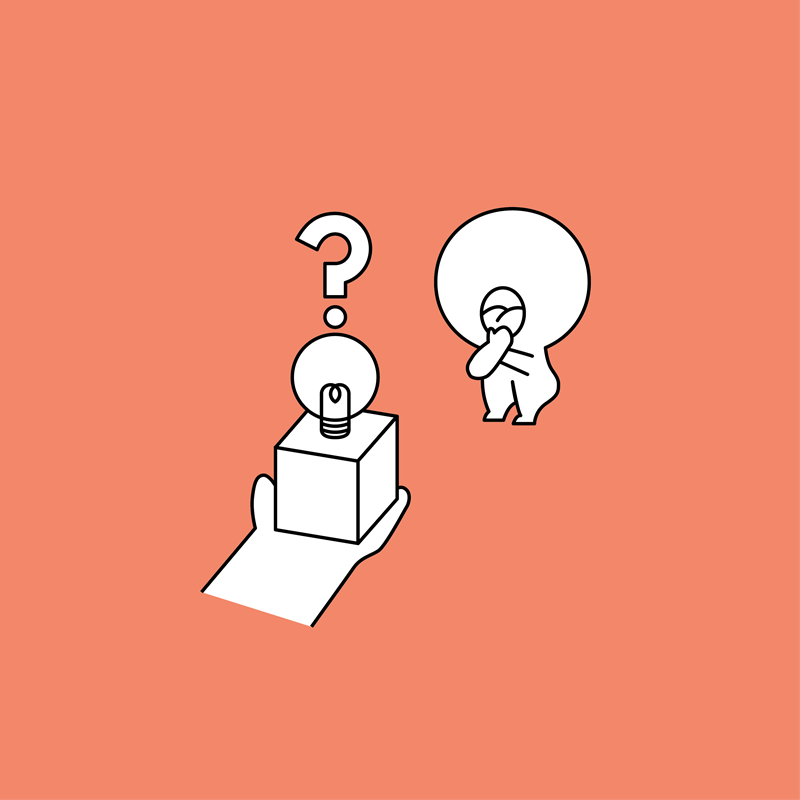
An exercise to help your team gather input from potential users to refine your solution further or to identify blind spots in the group’s thinking.
- Decide on a way to communicate your idea with others, whether it is in the form of a prototype or sketches.
- Identify different kinds of potential users for your idea to ask for feedback from. Make sure to cover a holistic range of users.
- Craft a list of questions with your team on what kind of feedback to ask for. The list of questions can be different depending on the user it is meant for.
- Ask the users for their feedback. Note down their feedback in their own words.
BUILD PARTNERSHIPS
BUILD PARTNERSHIPS
(REFINE)
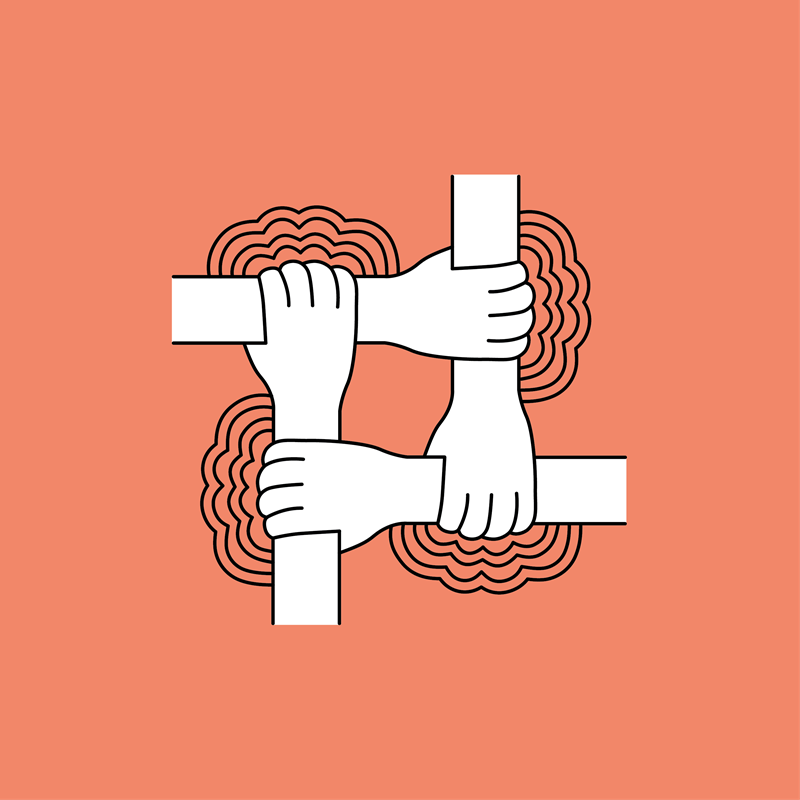
An exercise that helps your team implement the solution by engaging key stakeholders.
- Discuss with your team on who your keystakeholders are.
- Determine with your team about what you need from your key stakeholders.
- Figure out with your team how you can engage your key stakeholders.
FUNDS THAT MIGHT BE USEFUL FOR YOU
FUNDS THAT MIGHT BE USEFUL FOR YOU
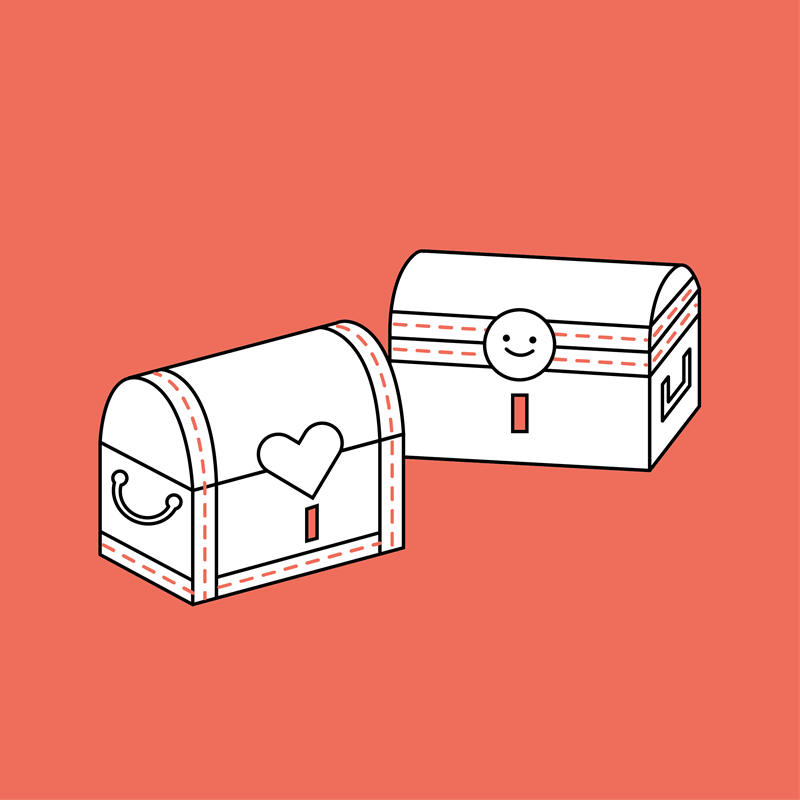
Find out about the differences between Love Our Hood Fund and Lively Places Fund to select the best fund for your project.
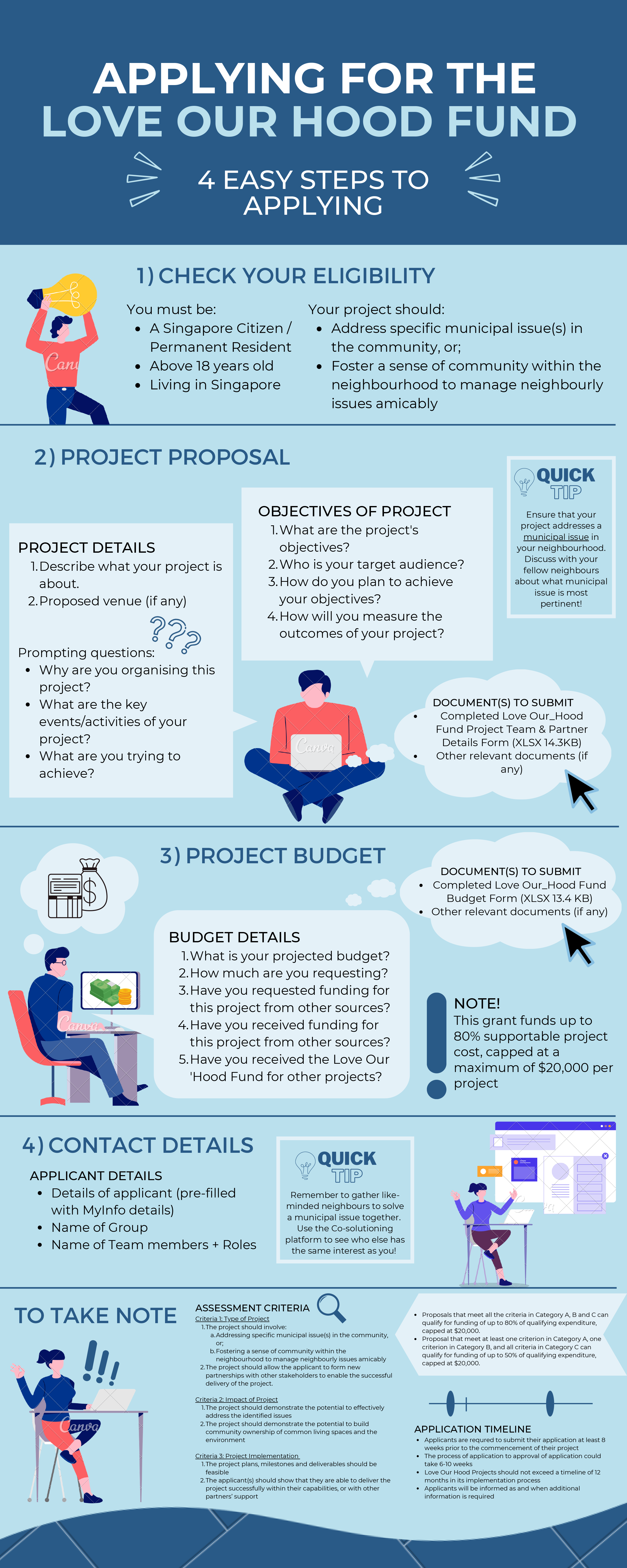
APPLYING FOR THE LOVE OUR 'HOOD FUND
APPLYING FOR THE LIVELY PLACES FUND